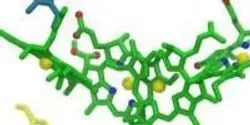Energy

Researchers at the Georgia Institute of Technology and the Joint BioEnergy Institute have engineered a bacterium to synthesize pinene, a hydrocarbon produced by trees that could potentially replace high-energy fuels, such as JP-10, in missiles and other aerospace applications. With improvements in process efficiency, the biofuel could supplement limited supplies of petroleum-based JP-10, and might also facilitate development of a new generation of more powerful engines.

The viability of the bioenergy crops industry could be strengthened by regulatory efforts to address nonpoint source pollution from agricultural sources. That, in turn, means that the industry should be strategic in developing metrics that measure the ability to enact positive changes in agricultural landscapes, particularly through second-generation perennial crops, according to a paper by a University of Illinois expert in bioenergy law.

In a recent early online edition of Nature Chemistry, Arizona State University scientists, along with colleagues at Argonne National Laboratory, have reported advances toward perfecting a functional artificial leaf.
















